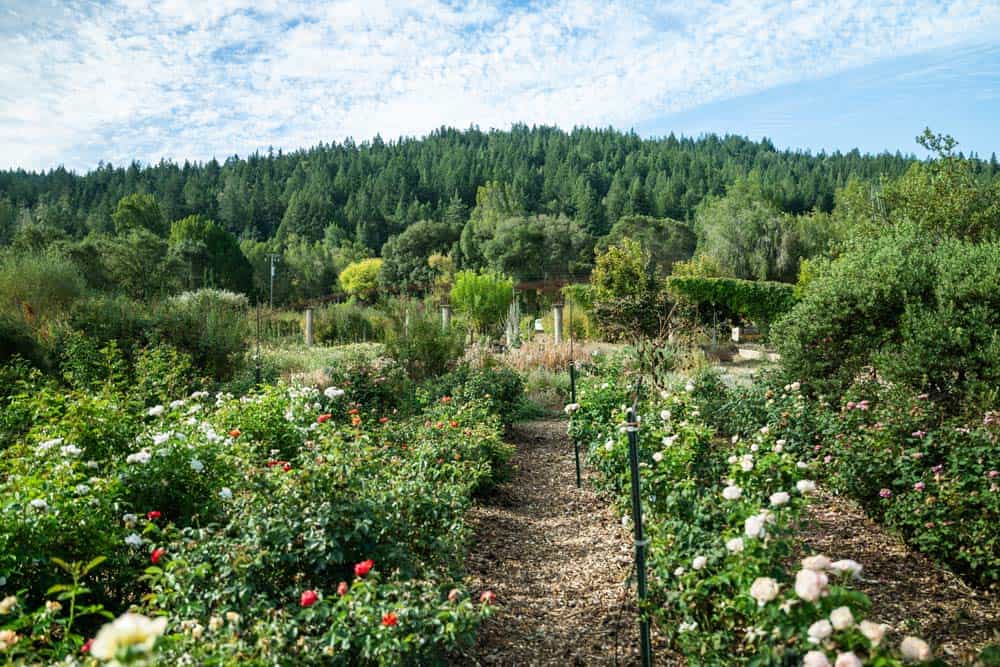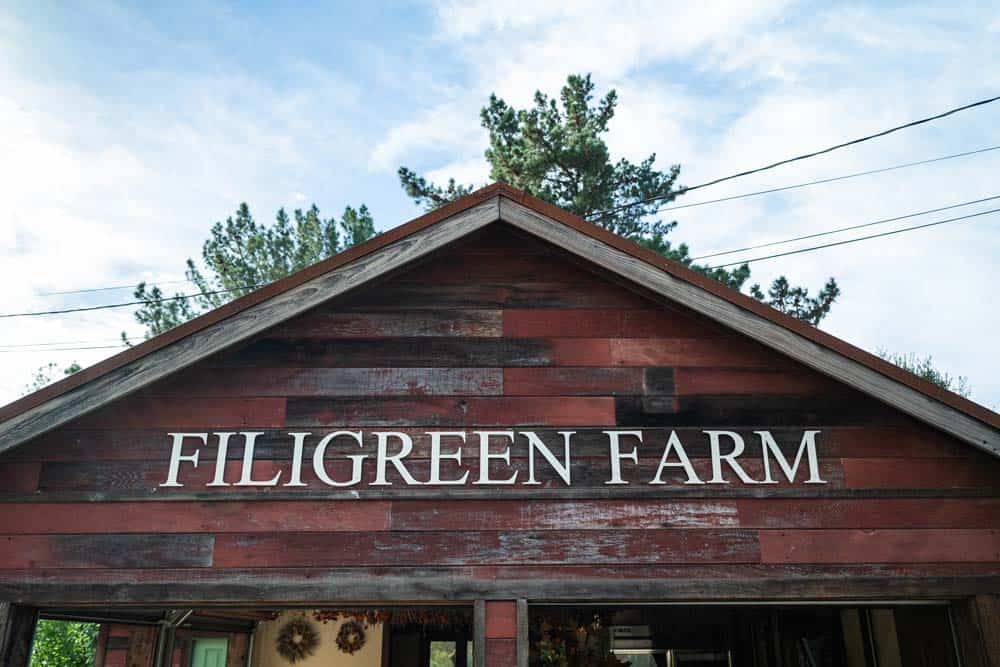Holistic Agriculture Practices at Filigreen Biodynamic Farm
When you first step onto Filigreen Biodynamic Farm in Boonville, California, it doesn’t just feel alive – it feels like it’s breathing. There’s a pulse here, a hum beneath the rich Mendocino County soil. This isn’t just farming; this is a living organism, nurtured and sustained through the art and science of biodynamic agriculture.

Stephanie Tebbutt, co-founder and managing partner, puts it plainly: “We’re building soil, building soil, building soil, and always giving back more than we take.” That’s the cornerstone of a biodynamic farm: not just growing food, but feeding the land itself.
Let’s explore how Filigreen Farm marries tradition, science, and community to create a model for regenerative agriculture that’s as practical as it is magical.
What Makes Filigreen Farm Unique?

At Filigreen Farm, the approach is refreshingly straightforward yet deeply intentional. Stephanie explains their vision: “We think of the farm as a self-sustained organism… keeping outside inputs to a minimum.” This philosophy drives every decision, from the compost piles to the cover crops.
The idea is simple – create balance, work with nature, and return as much to the land as you take. Filigreen thrives on three core pillars:
- Biodynamic farming practices: From on-site composting to rotational planting, every practice nurtures the farm’s ecosystem.
- Holistic soil health: By layering natural inputs like azolla and cover crops, the soil becomes rich, fertile, and resilient.
- Community connections: The farm stand and cooperative partnerships ensure that the farm’s bounty reaches local tables and beyond.

Stephanie sums it up beautifully: “The farm produces fruit, flowers, and food, but it also creates things you can’t always see – energy, connection, and life.”
Azolla: Nature’s Tiny Powerhouse
Azolla is a remarkable aquatic fern that floats on the surface of still or slow-moving freshwater. Importantly, Azolla is a natural source of fertility for the land. At Filigreen Farm, azolla thrives in irrigation ponds, where it is harvested and layered into compost piles to enhance soil health.
Stephanie Tebbutt, co-founder of Filigreen, explains its value: “Azolla has the same percentage of nitrogen as steer manure but grows naturally on our ponds. It’s an incredible resource for our composting process.” This tiny fern also triples its biomass in days, making it a renewable and sustainable nitrogen source for biodynamic farming practices.

A Holistic Approach to Soil Health
The soil is where it all begins, and Filigreen has soil health down to an art form. They treat their land with reverence, layering biodiversity and biodynamic practices to ensure the fields remain fertile for generations.
Here’s how they do it:
- Homegrown compost: On-site composting is an obsession at Filigreen Farm. From grass clippings and garden waste to tules harvested from irrigation ponds, they produce nutrient-rich compost in massive windrows.
- Azolla magic: Beyond its nitrogen content, azolla is also a champion for carbon sequestration and grows so rapidly that it’s harvested multiple times per year. At Filigreen, this incredible plant is layered into compost piles to supercharge soil fertility.
- Green manure and cover crops: Instead of stripping the soil bare, Filigreen plants cover crops like legumes and grasses to feed the land. Annie Courtens, production manager, says, “Everything we want to do as a farm comes back to nourishing the soil.”
These practices aren’t just good for the earth – they’re essential for growing produce packed with flavor and nutrition.

The Produce: From Orchard to Table
Filigreen Farm’s 97 acres are home to a stunning variety of fruits, vegetables, herbs, and flowers. As Annie explains, “We grow a diverse array… apples, pears, olives, and prunes, just to name a few.”
Prunes with a Story
California Prunes are a bit of an unsung hero at Filigreen. Stephanie fondly recalls driving through Healdsburg decades ago, when the air was thick with the “rich, heady fragrance of drying prunes.” Today, Filigreen continues the legacy with their Italian and French prune plums, grown on a Tatura trellis system to minimize ladder use and maximize care.
Annie laughs about customers who are blown away by the taste: “They call me later saying, ‘I need 10 pounds of prunes!’ I’ve met people on the side of the road to deliver prunes.” These aren’t your grandma’s prunes – they’re unforgettable.
Velma’s Farm Stand
Named for one of the ranch’s original homesteaders, Velma’s Farm Stand is named in honor of Velma Farrer, who worked this ranch alongside her husband for over 60 years. Open May through December, it’s a hub for fresh produce, dried fruit, olive oil, and flowers.
As Stephanie says, “It’s an opportunity for the community to meet each other on a Saturday morning and grab their week’s worth of produce.”

Community and Regenerative Agriculture
Farming isn’t just about the land; it’s about the people. Filigreen’s partnership with the Feed Cooperative connects its biodynamic products to local markets and communities across California. It’s a game-changer for small farms, as Annie explains:
“We can set our own prices, connect directly with buyers, and share our farm’s story. There’s so much power behind that.”
But sustainability isn’t just about soil and water. Annie makes a powerful point: “You can’t farm sustainably if you’re not sustaining the people who work the land.” Fair wages, access to housing, and healthcare are as essential as compost and crop rotation. At Filigreen, the farm family is just as important as the farm itself.

Why Biodynamic Farms Matter
In a world of industrialized agriculture, biodynamic farms like Filigreen offer a refreshing alternative. They heal the land, build stronger communities, and produce food that truly nourishes.
So, what sets a biodynamic farm apart?
- A Living System: Farms are treated as closed-loop ecosystems.
- Biodynamic Farming Techniques: From compost teas to crop rotations, every practice enhances soil quality.
- Community Focus: Biodynamic farmers prioritize relationships with their communities and customers.
At Filigreen Farm, this isn’t just a theory – it’s a way of life.

Visiting Filigreen Biodynamic Farm
If you’re in California, head to Anderson Valley in Mendocino County. Filigreen Farm is located in Boonville, just a two-hour drive from San Francisco, the journey through scenic landscapes is part of the experience. Stop by the farm stand for a taste of their seasonal bounty – you’ll leave with more than just groceries. You’ll leave with a story.

And if you can’t make it up the coast? Look for Filigreen’s produce in Bay Area markets like Bi-Rite, Good Earth Natural Foods, and Monterey Market. Annie encourages customers to ask for their farm by name: “It’s so powerful to hear someone say, ‘I want Filigreen apples.’”
Filigreen Biodynamic Farm isn’t just a farm – it’s a vision of what agriculture can be. It’s about honoring the soil, sustaining the community, and creating food that truly feeds the body and soul. As Stephanie says, “The farm itself is my greatest mentor. That humbling experience of learning every day from your mistakes and your successes. From the array of wildlife and energy that comes to the farm when you have biodiverse and diverse plantings.“

If there’s magic in farming, you’ll find it here at Filigreen Farm.
NEED A PLAYLIST TO PLAY IN THE CAR? CHECK OUT THIS CALIFORNIA GROWN SPOTIFY PLAYLIST:
Want to learn more about California’s diverse farms? Follow us on Pinterest and explore the stories of the Golden State’s agriculture. Share your experiences using #CAGROWN and support local farmers who make it all possible.

California Farmstand 101: The Best Farm stands in California
Whenever we are planning a California roadtrip we make sure to plan stops at as many permanent farmstands on our route as possible! There is nothing better than visiting a unique farmstand, eating locally-grown produce, and sampling delicacies from the Golden State all while searching for the perfect souvenir.
Click here to learn about more of the Golden State’s best farm stands?
This article was written by Meg van der Kruik. Photo credit James Collier for California Grown.

